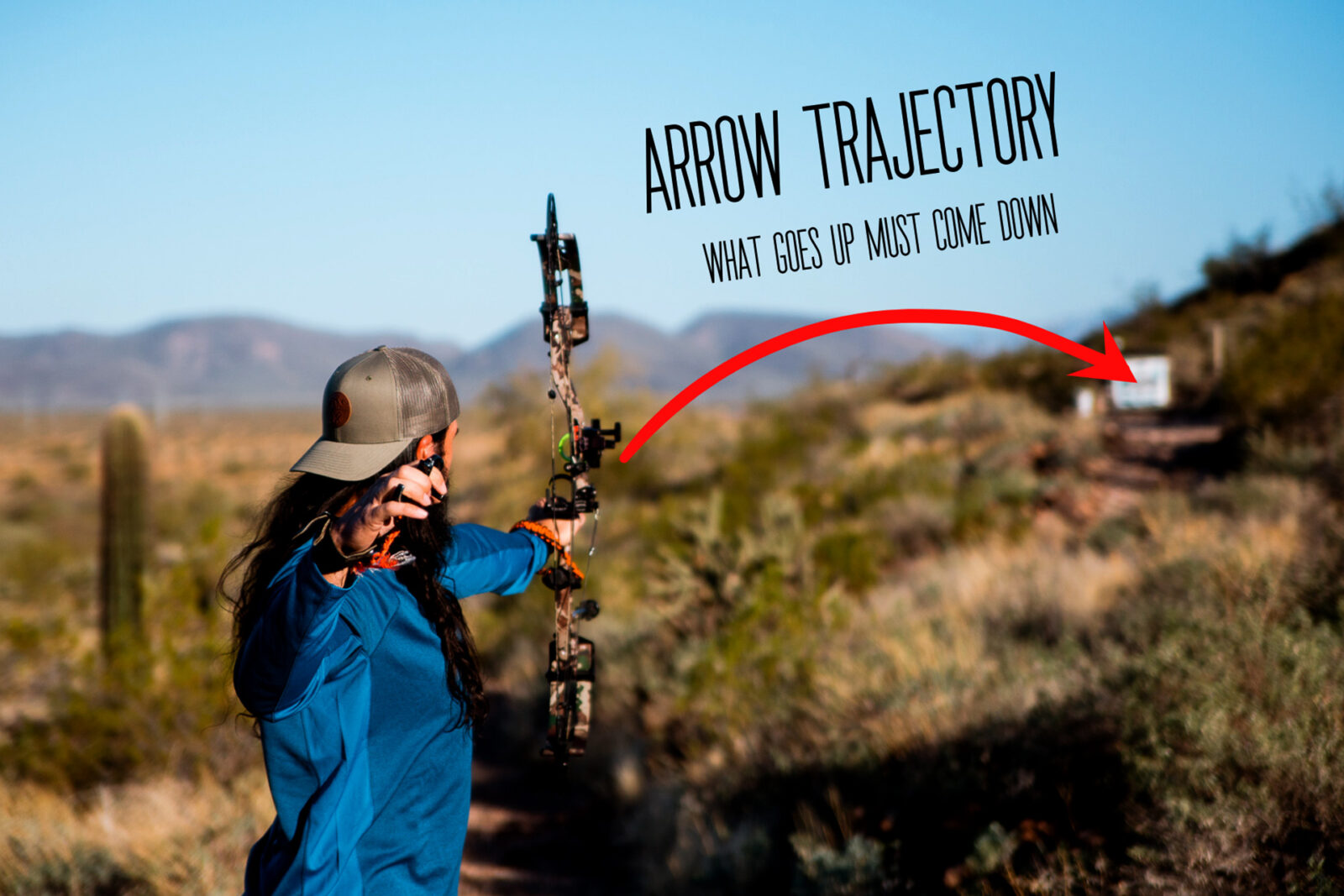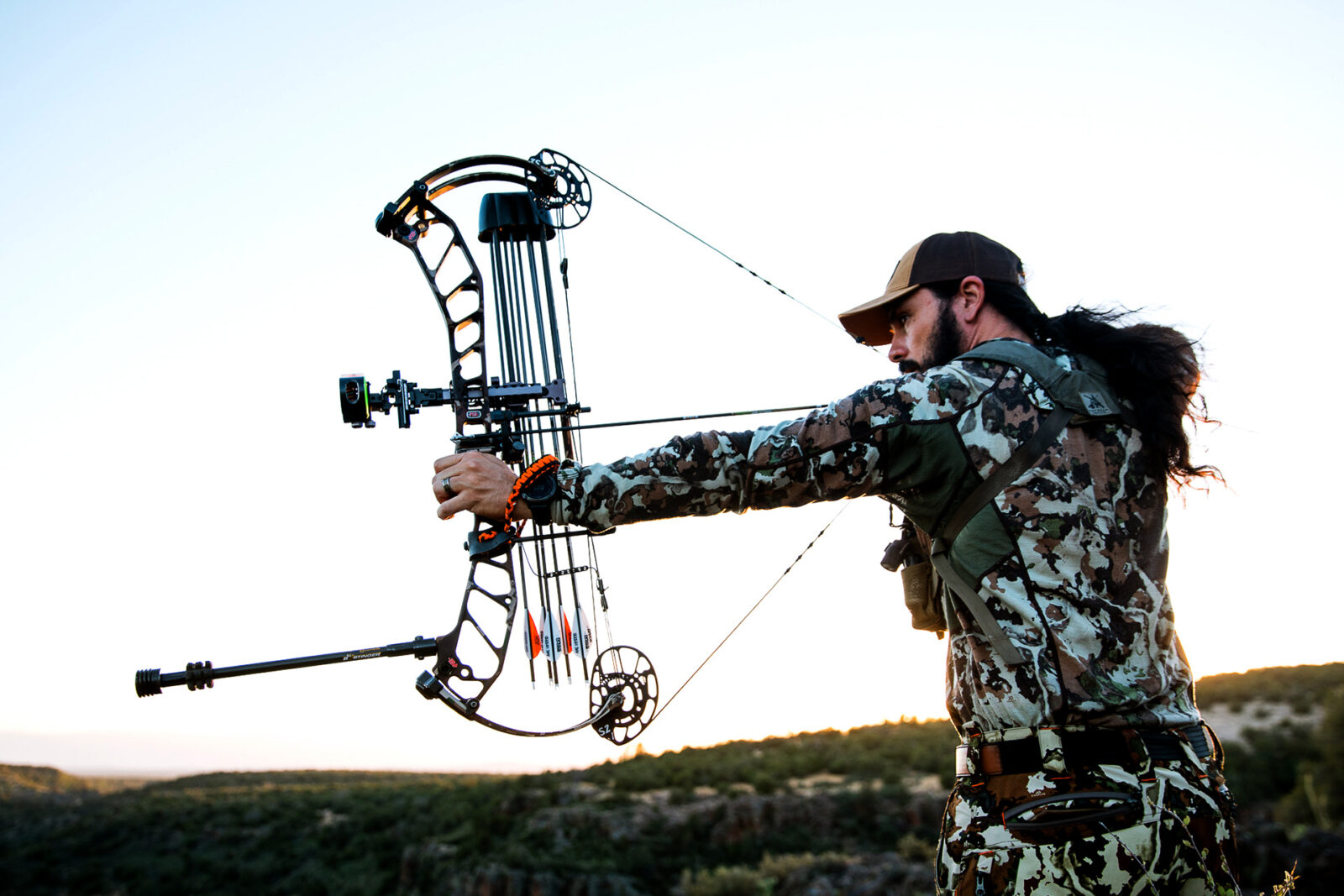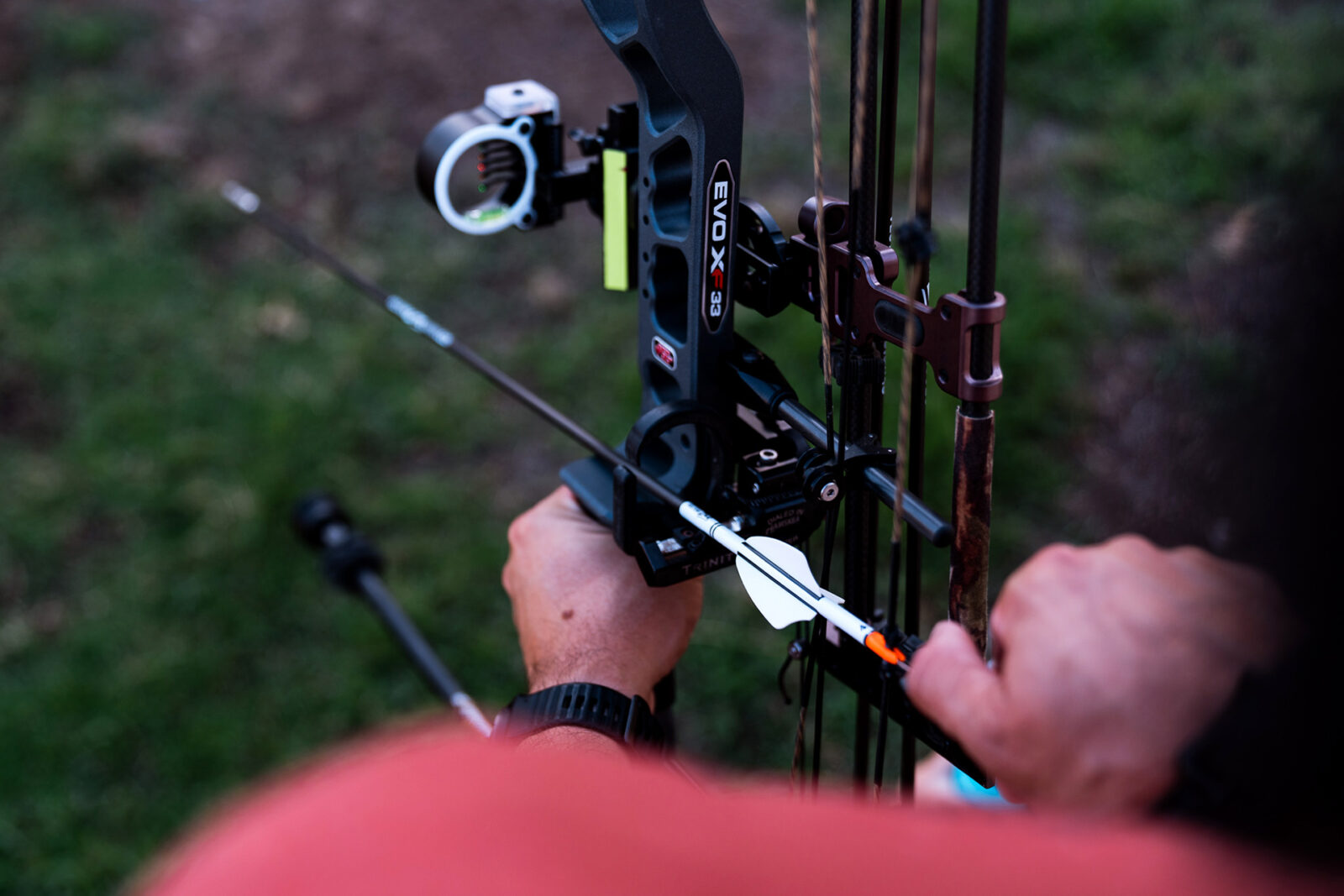Many times on our hunts, we only get one shot, so we better be able to make the most of it. It’s better to make sure we’re as dialed as we can be now before heading into the field later. Just getting reps behind the string is only part of the process, though. Being intentional with your archery practice is another.
Odd Yardages: Know Your Sight
If I had a dollar for every time an animal stood out there at exactly 30, 40, or 50 yards, I’d have a few bucks to go grab a coffee—maybe. More times than not, they’re at an odd yardage, something like 43 or 57 yards. Because of this, it’s in our best interest to practice at these more specific yardages. Nonetheless, most of us don’t. We’re more accurate shooting at the even yardages because that is where most of us have our pins set.
Whether you’re using a multi-pin or single-pin sight, this applies to you. Next time you’re at the range, take yourself out of your comfort zone and practice these odd yardages. One, you’ll be more familiar with what various distances look like to aid in yardage estimation down the road. We are glued to our rangefinders, but things aren’t always perfect. Two, you’ll have a better understanding of how to pin gap or how to compensate where to aim. Some folks prefer to just aim a little high or low with a certain pin, and others prefer to aim in between pins. And three, you’ll get to proof your sight tape. Knowing that your arrow is going to hit the X whether you’re standing at 60 yards or 63 yards is indeed a big deal. Exercise these skills and know your sight.

Arrow Trajectory Awareness
A lot of our focus with archery practice is aimed directly at where our arrow hits on the target, and that’s vital. Knowing we’re going to hit exactly what we’re aiming at builds confidence. On the other hand, not a lot of focus is put in between us and the target. Our arrow trajectory can also play an important role in whether that tag in our pocket gets notched. I remember missing a bull because my arrow deflected off of a limb that was at a midpoint between the animal and me. That’s something that could have been avoided had I paid more attention to the trajectory of my arrow.
Take the time to experiment with things like knowing how high your arrow is going to hit at 20 yards when aiming with your 40-yard pin. That’ll tell you how high your arrow is going to arc from 0-40 yards, and that’s a juicy piece of intel that could lead to a filled tag instead of a busted branch.

Arrow trajectory is easier to see with multi-pin sights than with single-pin sights. With multi-pins, you can literally see the trajectory in the sight window. Pay attention to the pins above the pin you’re aiming with. For instance, if you’re aiming at 60 yards and you look up and notice your 30-yard pin sitting on a branch roughly 30 yards away, guess what? Watch out, branch. The same level of thinking goes for the other yardages in between you and 60 as well.
Simulate Hunting Conditions
We are conditioned for comfort. Everything about our lives today revolves around it, and that can invade our archery game as well. It feels good to stand in the backyard at 20 yards with perfect form and let it rip on a calm day. Staying inside of your comfort zone, though, will only get you so far.
I encourage you to break that comfort bubble and intentionally make things uncomfortable now and again. Don’t worry if you aren’t as accurate. Doing so will actually provide an honest glimpse into what might happen in a real-world hunting scenario. Whether you’d like to accept it or not, your effective range decreases.
Take shooting in the wind. I hate it, and I don’t know anyone who doesn’t. When was the last time you hunted the mountains and there was no wind? I’d guess never. Shooting in the rain is another one, and so are shooting with our hunting gear on, wearing a mask if you use one, or shooting on uneven ground. Practice shooting in less-than-desirable conditions so you feel more comfortable when the moment counts.

Know Your Shot Process and Use It
It had been about an hour standing above a bedded mule deer buck. All he had to do was stand up so I could take my opportunity to try and get an arrow in him. About 30 minutes later, he finally stood and gave me a chance. I watched my arrow sail right past, followed by him running off to greener pastures. I was so worked up, I completely fell out of my shot process, and it resulted in me forgetting to level my bubble in super steep terrain. It was a hard lesson and one I’ll never forget.
Archery accuracy is all about doing the same thing the same way every single time. A shot process adds structure that helps ensure consistency. It can be as simple or involved as you want, but the point is to have one. Develop a routine of things that you do or say to yourself to keep your shot on track. You’re crossing t’s and dotting i’s with this.
Going through your shot process in the field can help maintain focus when an animal is present. It’s easy to get worked up and forget anything and everything about what you’ve practiced. Use your shot process to bring you back to zero. Save the excitement for after you have made the shot.

Dedication Equals Success
To consistently arrow animals takes work and dedication. It might take years of eating tag soup, but you will eventually find success. The recipe for that success comes at different rates for different people, and there are a lot of things that need to line up for you to end the day with an animal lying at your feet. Many of those things are out of our control, but being intentional with your archery practice is one of the things we can control. Bridge the gap, and you’ll be that much closer to passing on the tag soup.